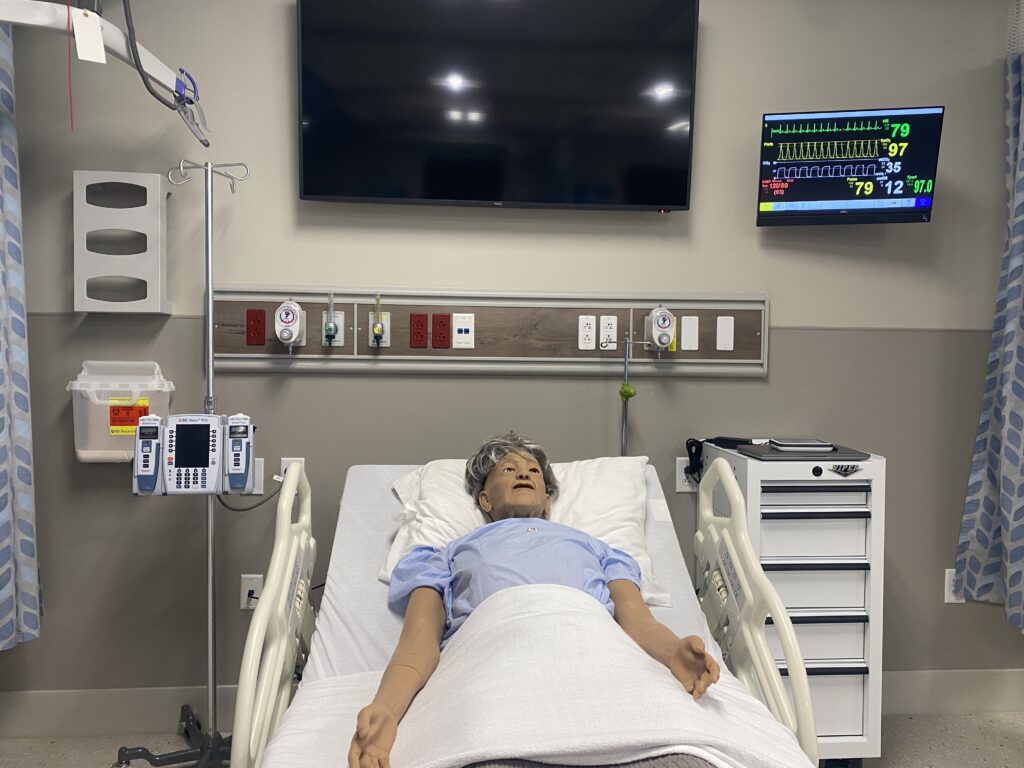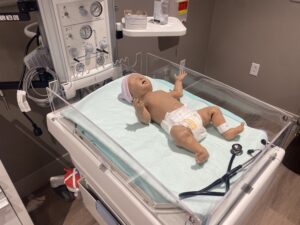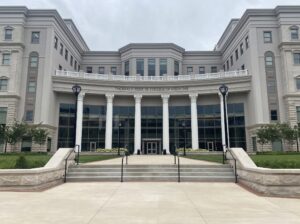
At first, it’s not quite clear what looks off about the mannequins. It could be the eyes that move but don’t seem focused. Or the skin that’s a little too perfect. Or the arms sitting at a strange angle.
Even though the dummies don’t look completely lifelike, they can mimic human bodies to a chilling extent. The most technical mannequins can suffer from external and internal bleeding. Their skin can sweat. They can cry tears. They can turn blue if they don’t get enough oxygen. Their pupils dilate during light tests.
One of them can even give birth — to another mannequin.
“You can monitor the baby,” says Beth Hallmark, director of education within the center. “The baby can cry, see the baby’s eyes are moving. And you can you can do almost anything to this that you’ve been to to a lot of baby.”

Several Belmont University programs share a simulation lab. It will help train future doctors, nurses, occupational and physical therapists, pharmacists and social workers.
This is all in Belmont University’s new simulation center for future medical workers. The school built a new college of medicine to house its medical school, which welcomes its first class this month. Inside that building, the sim lab covers two floors.
Future physicians will train there, and they’ll be sharing this space with soon-to-be nurses, pharmacists, occupational therapists, physical therapists, mental health counselors and social workers.
The lab has mock hospital rooms. There is an area for pharmacists to practice retail and inpatient services. And there’s a fully functional apartment for the physical and occupational therapists. They’ll practice getting patients re-acclimated to daily life after severe injuries or stints in the hospital.
And the mannequins aren’t static. They’re used in practice areas for the kinds of health care that can be a little more invisible.
“We put a lift in this room so it goes into a bathroom so we can teach safe patient handling or transfers,” Hallmark said. “The lift goes over to the toilet. And then there’s a shower … so they can practice getting, patients into the bathroom.”
It will look like the students are alone in these spaces, but they won’t be. Faculty members will see them on cameras in the exam rooms. Several of the hospital rooms have one-way mirrors, with control rooms hidden behind them. That’s where faculty members can sit.
“They’ll be actually changing the condition of the patient based on the student’s decisions,” Hallmark said. “So if the student doesn’t put oxygen on, they can drop their oxygen rate … or they can actually, you know, actually die.”
Hallmark says in that situation, it’s important to create psychological safety so the students know they’re learning in a safe environment. It can prepare them for the pressure they’ll face treating real patients.

Belmont University started building the Thomas F. Frist Jr. College of Medicine about three years ago. The building will hold the university’s new medical school, as well as space for other disciplines, such as nursing, pharmacy and occupational therapy.
Dr. Anderson Spickard, the medical school dean, says the lab will also help students after they’ve gotten real-life practice.
“Another way it meets needs is actually coming back from those live clinical spaces where a student perhaps needs to redo something that didn’t go as well, or more commonly, be exposed to a patient case that they weren’t exposed to, that we felt meets our learning objectives,” he said.
Hallmark says the lab standardizes the kinds of cases students get to see — either in a real-life clinic or on the mannequins.
“So we can make those situations so that every student gets the same experiences to meet our learning objectives for our curriculum,” she said.

